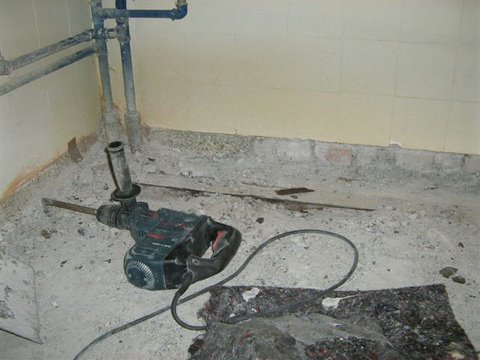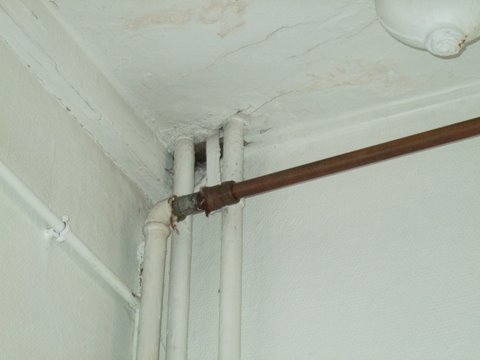

Corroded iron beams in wet room floors
Building Type 3: 1920-1940
When cracks develop in a wet room floor (even micro cracks that are difficult to see with the naked eye), water can penetrate the floor structure, no matter how it is constructed. If the underlying structure is made of relatively coarse concrete with rock pockets, the water will find its way through the material fairly easily.
If the cracks are detected and repaired in time, major remedial work may be avoided. Otherwise, the embedded iron must be isolated to the extent of the damage and an assessment made as to whether there is sufficient strength remaining in the iron beam or if it needs to be replaced. If the iron beam has merely suffered superficial corrosion and deterioration, the rust and loose flakes are removed and the beam is treated with a rust inhibitor before it is re-embedded. If the iron beam has deteriorated considerably, it will be completely removed and replaced with a new rustproof (e.g. galvanised) beam.
After the final concreting of the repair site or of the entire floor structure, a damp-proof layer (e.g. lubricating membrane) should be introduced between the structure’s supporting layer and the floor covering.
There is a separate description for the partial repair of a terrazzo floor covering.
Iron pipes embedded in the floor structure will often corrode as a result of exposure to water, and this in itself can cause major structural damage. Therefore, through-pipes must always be protected in sleeves and should be placed where they are least likely to be exposed to water (e.g. away from the shower area).
Further information can be found at BYG-ERFA, etc.: Wet rooms
Photos: Jesper Engelmark